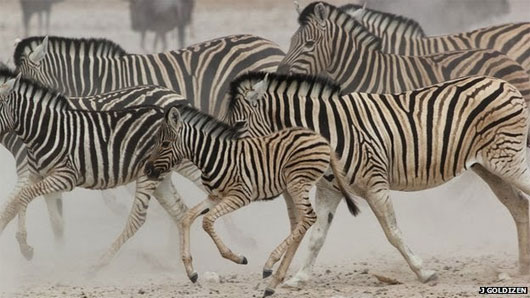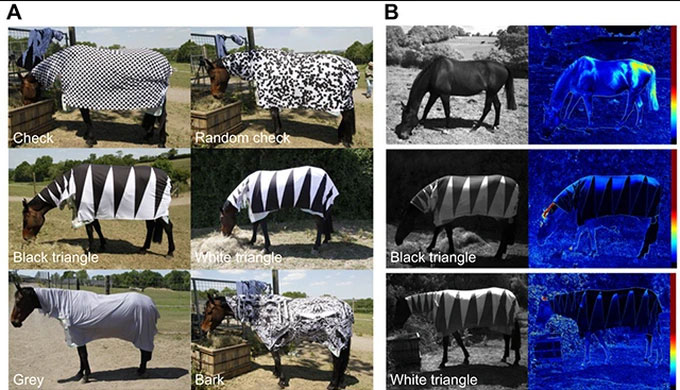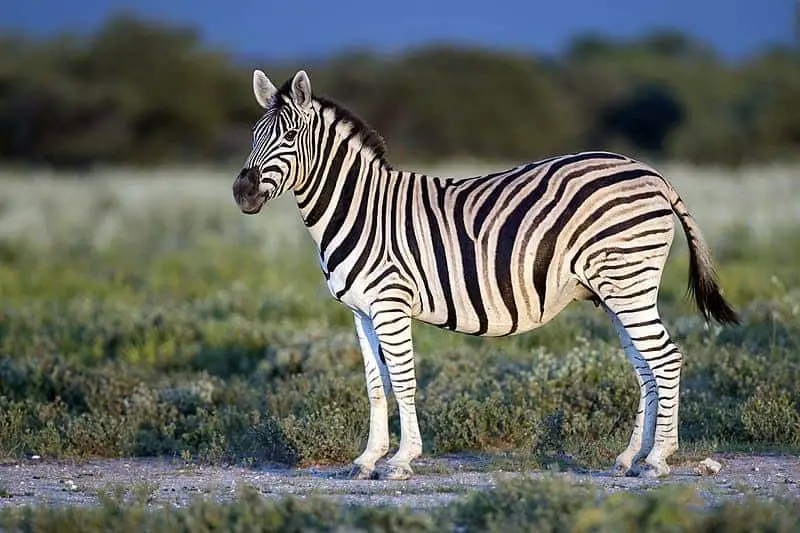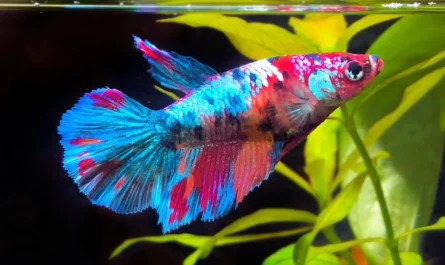The Zebra Stripes Meaning will help protect zebras from predators by creating an optical illusion.
After using research computer models, scientists from the University of Queensland, Australia discovered that zebra stripes can create an optical illusion when the animal moves, helping it avoid attacks from predators. many types of predators . The research results were published in the journal Zoology, BBC reported.
Thank you for reading this post, don't forget to subscribe!Scientists previously believed that zebra stripes have the function of transmitting social signals and camouflage at dawn or dusk in grassland environments.

In this study, Professor Johannes Zanker of the University of London, UK and his colleagues examine the process by which zebras confuse predators and parasites based on analyzing images and video footage. .
The results show that when zebras move, they create a false sense of information for viewers. Humans and many other animals have a nervous system that detects movement based on object contours, so it is easy to misunderstand and misjudge the animal’s movement. For example, when turning a wheel clockwise to reach a certain speed, people feel like the wheel is spinning in the opposite direction.
“ The broad diagonal stripes on the sides and narrow stripes on the zebra’s back and neck create an illusion when the animal moves , especially in a large zebra herd. This helps distract predators, distorting the approach of parasitic animals,” said Martin, PhD at the University of Queensland, Australia.
He also added: “The results obtained are of great significance in studying patterns in animals. Many species of virgin fish and snakes also use body color to hide. Humans can apply it to camouflage warships or deploy large-scale battles.”

The stripes on a zebra's body also help zebras regulate their body temperature.In addition to protecting the zebra from predators, the stripes on the zebra’s body also help the zebra regulate its body temperature .
Studying and comparing zebra stripes from 16 locations with different living conditions, scientists from the University. California (USA) discovered that the difference between the way heat is absorbed and radiated in dark and light colored fur areas on zebra skin is the cause of stripes.
From analyzes combined with living conditions, scientists have found a clear link between temperature and zebra skin. Thereby, often in the hottest areas, zebras will have more stripes than normal and at the same time they will also have darker stripes than in tropical regions.
Explaining this reason, scientists confirm that white and black fur areas have different rates of absorbing and radiating heat, so the striped arrangement can create appropriate air convection. for the horse’s body. In other words, it is an invisible air conditioner built into the zebra’s body.
In recent research, scientists have found a new use for these black stripes. Specifically, they appear to be more involved in deterring blood-sucking flies .
This is a study led by scientists from the University of Bristol in the UK. After much testing, they gradually discovered that the zebra’s black stripes were a pretty good defense against flies.
To make the above statement, the researchers placed blankets of different designs on the backs of horses, then recorded the behavior of blood-sucking flies when they approached and interacted with the horses.
The results show that blood-sucking flies in particular, and flies in general, do not like to land on objects with mixed colored stripes.

Different patterns are tested on horseback.
(Photo: Journal of Experimental Biology).Explaining the strange habit, Professor. Tim Caro from the University of Bristol said flies are most attracted to objects with large areas of dark color. However, when its structure is disrupted by white patches, flies become less willing to interact.
This is proven based on experiments. That is, the higher the contrast of the stripes, the less likely the fly is to want to land.
This shows that any ungulate species that has less overall dark coloration in its skin, or possesses mixed patches of color, has an advantage in reducing insect attacks. , parasitic.




